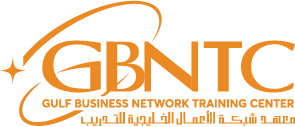Choosing the right HVAC equipment for multifamily residences involves careful consideration of various factors. Shared ventilation systems play a significant role in ensuring consistent air quality and comfort for all residents. With different units often operating simultaneously, an integrated approach to ventilation can significantly enhance both comfort and performance.
Understanding zoning needs is crucial in creating personalized environments within a shared living space. By implementing zoning systems, property managers can tailor heating and cooling settings to suit the preferences of individual tenants, promoting satisfaction and preventing energy wastage.
Billing efficiency also comes into play when selecting HVAC systems. A well-designed system not only maximizes comfort but can also streamline billing practices. Accurate measurement and division of energy costs among residents create transparency and trust within the community, encouraging everyone to participate in energy-saving initiatives.
Determining the Right Sizing and Load Calculations for HVAC Systems
Accurate load calculations are key to selecting the appropriate HVAC equipment for multifamily residences. These calculations determine the heating and cooling capacity needed to maintain a comfortable indoor environment. Factors influencing load calculations include the size of the units, local climate, insulation quality, window types, and occupancy levels.
For multifamily structures, it’s essential to consider the specific zoning needs of each unit. Different areas may require varying temperatures based on occupancy patterns and usage. Implementing split systems can efficiently meet these diverse demands, allowing independent control over each zone. This flexibility helps optimize energy consumption while ensuring resident comfort.
Using software tools and manual calculation methods can provide accurate readings. Professional input ensures that all variables are considered, which aids in choosing the right equipment for the space. This step is critical, as undersized or oversized systems can lead to performance issues, increased energy costs, and reduced lifespan of the equipment.
Ultimately, a precise understanding of each unit’s load requirements will guide you in making informed decisions regarding HVAC system selection, ensuring efficiency and comfort for all residents in the building.
Evaluating Energy Efficiency Ratings and Cost Considerations
Energy efficiency ratings play a significant role in selecting HVAC equipment for multifamily residences. Look for systems with high Seasonal Energy Efficiency Ratio (SEER) and Energy Efficiency Ratio (EER) ratings. A higher rating indicates better energy performance, leading to reduced utility bills for tenants while contributing to a healthier indoor air quality (IAQ).
Cost considerations extend beyond the initial purchase price of HVAC equipment. Assess long-term operational costs, factoring in energy consumption, maintenance access, and potential repair expenses. Selecting units that are easy to maintain can result in lower costs over time, ensuring that both tenants and property managers benefit.
Consideration of zoning needs is also vital. Systems that allow for zoning can optimize HVAC performance by directing air only to occupied areas, enhancing comfort and reducing energy waste. This feature allows for tailored temperature control for different units, which aligns with energy-saving strategies.
In summary, focusing on both energy efficiency ratings and the total cost of ownership helps deliver a balance between upfront investment and ongoing expenses, ultimately benefiting the overall management of multifamily properties.
Exploring Installation Options and Maintenance Requirements
Installation options for HVAC systems in multifamily residences greatly influence efficiency and tenant comfort. Considering shared ventilation systems can effectively enhance indoor air quality (IAQ) for tenants while minimizing noise reduction. These systems must be designed to ensure that they operate quietly, promoting a peaceful living environment.
Another crucial aspect is the duct design. A well-planned duct layout can optimize airflow, reducing energy loss and improving overall system performance. It is essential to provide maintenance access to equipment, allowing technicians to perform routine checks with ease, ultimately prolonging the system’s lifespan.
Smart thermostats can offer advanced control over climate for each unit, addressing zoning needs effectively. They enable tenants to adjust settings according to their preferences, which can lead to better billing efficiency. In split systems where individual units are employed, such customization becomes even more significant, as it can influence utility costs and comfort levels.
Regular maintenance is critical for all HVAC equipment. Scheduled inspections not only ensure optimal performance but also address potential issues before they escalate. This proactive strategy not only saves money in the long run but also enhances tenant satisfaction by maintaining a comfortable living environment. For professional assistance and insights on HVAC selection and maintenance, visit https://mdairheatingandcooling.com/.


Comments are closed